My son recently called me from the grocery store with a question. ”Hey Mom, what is the best source of whole grains –pasta, bread, cereal or brown rice?”
A fabulous question that is not easy to answer.
A college student, he explained that adding whole grain sources of carbohydrates to his diet made him feel better. His exercise routine includes aerobics and intense weight training sessions; plus he needs stamina and brain power for studying. My hunch is that he is benefiting from the fact that fiber-rich whole grains take longer to digest than refined grains; they break down into simple sugars and enter the bloodstream at a slower rate than refined grains so they help us feel satisfied longer.
Less immediate benefits to consuming whole grains include better weight maintenance and reduced risk of stroke, Type II diabetes, cardiovascular disease and some cancers. (Reference #1 and #2). While most research indicates you need three daily servings of whole grains to realize these benefits, some studies show that even one serving a day can be helpful according to the Whole Grains Council.
Shopping tips follow, but before heading to the grocery store it helps to define whole and refined grains:
Whole grains have the entire kernel of grain, the bran, germ and endosperm, so you get the complete nutritional package with fiber, vitamins, minerals, antioxidants and phytochemicals.
Refined grains are just the endosperm. The bran and germ are stripped away, eliminating most of the fiber and nutrients. When refined grains are “enriched” some of the original nutrients are added back; when they are “fortified” nutrients are added that were not in the original product. B vitamins (niacin, thiamin, riboflavin and folic acid) and iron are added to many refined products.
The Dietary Guidelines 2010 (Reference #3) recommends making half of your grains whole and taking in no more than 3 daily servings of refined grain foods because, while they contribute some key nutrients, they are often packaged with extra solid fats and sugars as in cakes, pastries and cookies.
Shopping for whole grains is easy when the product bears one of two Whole Grain Stamps(from the Whole Grains Council).
The 100% Whole Grain Stamp certifies that all the grains in the product are whole so you get at least 16 grams or one serving of whole grains. The Basic Whole Grain Stamp certifies that there is one-half a serving (at least 8 grams) of whole grains.
To calculate the percentage of whole grains in a product, divide grams of whole grain by the gram weight of a serving. For example, if a 28 grams (1 ounce) serving of cereal has 8 grams of whole grain, divide 28 by 8 and see the cereal is almost 30% whole grain.
If you don’t see a Whole Grain Stamp you must read the Ingredient Statement.
Look for whole grains at the top of the list.
Common whole grains: whole wheat and wheat varieties (whole wheat flour, bulgur, cracked wheat, wheat berries, farro, kamut, einkorn, spelt, emmer), barley, amaranth, buckwheat, corn (whole cornmeal and popcorn), millet, oats (oatmeal, steel cut), brown rice, black rice, wild rice, quinoa, rye, teff, sorghum and triticale.
Not technically “whole grain” but also good-for-you ingredients are bran, which supplies dietary fiber and wheat germ. Degerminated cornmeal and enriched flour are not whole grain. “Multigrain” may be a mostly refined grain product with a few whole grains sprinkled in; check to see if whole grains are at the top of the list of ingredients. Semolina, durum wheat, wheat and organic wheat are refined unless prefaced by the word “whole.” (Reference # 3)
Tips for picking out Cereal, Bread and Pasta
Cereal: To compare cereals note the serving size, which range from 1/2 cup to 1 1/4 cups. If you’re concerned about calories, check how many in a serving of the cereal.
Nutrition Action Healthletter (Reference # 4) offers these two tips: Make sure the first two ingredients listed in the Ingredient Statement are whole grain(s), bran, fruit or soy. And check the Nutrition Facts for at least 3 grams of dietary fiber (for light cereals weighing about 1 ounce or 28 gram per serving) or 6 grams of dietary fiber (for heavier cereals weighing about 2 ounces or 55 grams) per serving.
Things you want less of in cereal are sodium and sugar. Sugar can be tricky as the label doesn’t distinguish between added and natural sweeteners. For example, this yummy cereal, Raisin Bran Clusters, lists raisins as the first ingredient but doesn’t state how much of the 18 grams of sugar per serving comes from the fruit.
I picked out 1 tablespoon of raisins from a 1 cup serving of cereal;
the raisins provide about 7 grams of natural sugar, leaving 11 gram or almost 3 teaspoons of added empty-calorie sugar per cup.
Bread: If you don’t see a Whole Grain Stamp or the claims “100% Whole Grains” or “100% Whole Wheat,” you have to rely on the ingredient statement. Sodium in bread can add up so check the Nutrition Facts for the sodium content and double it if you make a 2-slice sandwich. Nutrition Action Healthletter (Reference # 5) suggests picking breads with under 120 milligrams of sodium per slice. Like cereal, some bread contains a lot of sugar or other sweeteners such as molasses, honey, brown rice syrup, evaporated cane juice. Looking for protein? Some breads have up to 6 grams per slice. Counting calories? Look for the light or low-calorie bread whole grain breads with only 40 to 50 calories per slice.
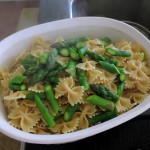 Pasta: There is a variety of whole grain, fiber- and nutrient-enriched products on the market today, not to mention gluten free choices. Read labels carefully and compare products. Barilla makes Whole Grain pasta with 51% whole wheat and added oat fiber to yield three times the fiber as regular pasta. They also make White Fiber pasta which is supposed to look and taste like regular pasta but has added whole grains and triple the fiber of regular pasta. (I have yet to try it.) I have eaten Barilla Plus which is not whole grain but gets a protein boost from a grain and legume flour blend and egg whites; it has a whopping 10 grams of protein per 2 ounce serving.
Pasta: There is a variety of whole grain, fiber- and nutrient-enriched products on the market today, not to mention gluten free choices. Read labels carefully and compare products. Barilla makes Whole Grain pasta with 51% whole wheat and added oat fiber to yield three times the fiber as regular pasta. They also make White Fiber pasta which is supposed to look and taste like regular pasta but has added whole grains and triple the fiber of regular pasta. (I have yet to try it.) I have eaten Barilla Plus which is not whole grain but gets a protein boost from a grain and legume flour blend and egg whites; it has a whopping 10 grams of protein per 2 ounce serving.
The October 2012 Consumer Reports magazine, top ratings for whole grain pasta went to 365 Everyday Value Organic Whole Wheat (Whole Foods) and Trader Joe’s Organic Whole Wheat pasta. I’ve also seen good ratings for Bionaturae organic whole wheat pasta.
Getting enough dietary fiber is important, too. Dietary fiber, the non-digestible part of carbohydrates and lignin, is found in beans and peas, fruits, vegetables and nuts as well as whole grains. It is associated with better gastrointestinal function, weight maintenance and may prevent conditions like cardiovascular disease, type II diabetes inflammation and osteoporosis. The Adequate Intake for dietary fiber is 14 grams for every 1000 calories or 25 grams for women and 38 grams for men (References #1 and # 7.) And remember, kids need dietary fiber for good health, too.
Some manufacturers of grain products boost the fiber by adding “isolated” fibers such as chicory root fiber (sometimes called inulin), oat fiber, wheat fiber, soy fiber, polydextrose, cellulose fiber, soy fiber and modified wheat starch. These processed fibers have not yet been proven to have the same health benefits as the intact fiber in whole grains.
Brown Rice and Other Grains
Brown jasmine rice and brown basmati rice are staples in my kitchen for Asian and Indian meals. I also love exotic-looking black rice. If you’re intimidated by the long cooking time, soak the rice before cooking. I usually soak brown rice for an hour or two in my old-fashioned rice cooker (no fancy brown rice setting) however an article in Cook’s Illustrated March & April 2012 detailed experiments with soaking brown rice for 6 hours (in pre-measured cooking water) to cut cooking time from 45 minutes to just 30. Don’t soak it for too long however (the article says no longer than 24 hours) or it can ferment or sprout. You can also soak heartier grains like wheat berries and steel cut oats to shorten their cooking time.
Lately I’ve been experimenting with other grains such as bulgur, whole wheat couscous, quinoa, farro, wheat berries, amaranth and barley. I mix them to make multi-textured, nutty-flavored salads, pilafs and stuffings. Since they have varying cooking times, I cook each grain separately, drain off the excess water and then combine them in the dish. I’ve even saved the water used from cooking one grain to cook another grain. See Reference # 6 for a link to a chart by the Whole Grains Council on cooking various grains.
This is a photo of a pilaf made in the style of Fried Rice with wild rice, wheat berries, and bulgur with sautéed onion, carrots, red bell pepper, dry sherry, toasted pecans and fresh sage. Make sure to customize the seasonings to go with the meal and substitute vegetables for the meat to make a side dish. Extra grains can be frozen for later use.
Which is the best source of whole grains? They’re all good choices but you have to read the labels to pick out the best ones for you.
References
1. http://www.wholegrainscouncil.org/whole-grains-101/what-are-the-health-benefits
2. Whole Grains Could Lower Your Risk of Colorectal Cance. Tufts University Health & Nutrition Letter, February 2012, Vol. 29, Number 12.
3. Dietary Guidelines for Americans, 2010 http://www.health.gov/dietaryguidelines/dga2010/DietaryGuidelines2010.pdf
4. Cereal Solutions, How to Decode Claim that Confuse. Nutrition Action Healthletter, May 2012, p. 12-15.
5. Reading the Breadcrumbs. Nutrition Action Healthletter, September 2012, p. 13-15.
6. Cooking With Whole Grains http://www.wholegrainscouncil.org/files/CookingWholeGrains.pdf
7. Dietary Fiber — New Insights on Health Benefits. Rita Carey Rubin, MS, RD, CDE. Today’s Dietitian. Vol. 13 No. 2 P. 42 February 2011. http://www.todaysdietitian.com/newarchives/020911p42.shtml
Copyright © Lorelle S Del Matto 2012
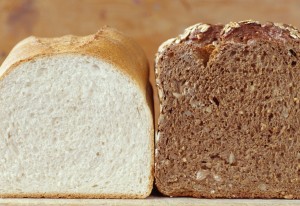

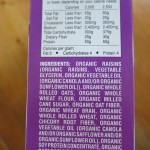
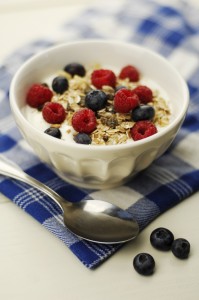
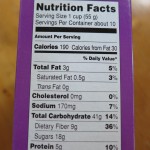



 About lorelle
About lorelle
Thanks for finally writing about >Shopping for Whole
Grains <Liked it!
Hello, I think your site might be having browser compatibility issues.
When I look at your website in Safari, it looks fine
but when opening in Internet Explorer, it has some overlapping.
I just wanted to give you a quick heads up! Other then that, terrific blog!
I do trust all of the concepts you’ve introduced for your post.
They’re really convincing and can certainly work.
Nonetheless, the posts are very brief for newbies. Could you please
extend them a bit from next time? Thank you for the post.
What’s up, this weekend is nice designed for me,
since this point in time i am reading this wonderful educational article here at my house.